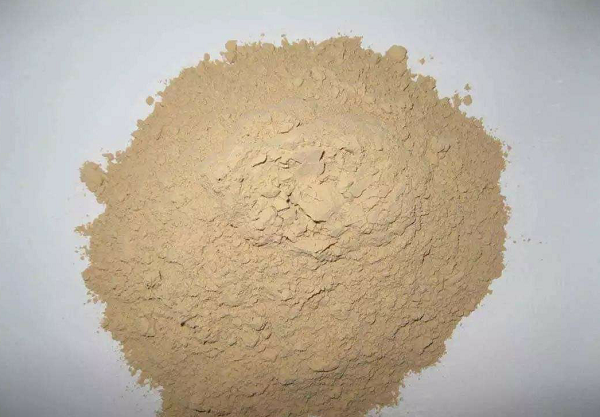The mechanism of action of bentonite in iron ore pellets
The Pellet method represents the development direction of fine powdery iron concentrate, bentonite as a dry binder plays a decisive role in the process of caking, therefore, it is of great significance to study the bonding mechanism of bentonite to iron ore pellets.

The mechanism of action of bentonite in pellets
The preparation process of iron ore pellets goes through three stages: pelletizing (wet/green pellets) → drying and preheating (dry pellets) → roasting. In these three stages, the role of bentonite is not exactly the same.
1. Granulation (wet bulb) stage
According to Rumpf theory, iron ore pellets should be of low viscosity liquid bonding type. There are 10 kinds of forces in the pelletizing process. This paper only discusses the mechanism related to the action mechanism of bentonite in the green pellet stage.
1.1 Adjust moisture to increase capillary force
The moisture in the pellet and its type are crucial to the strength of the pellet. Bentonite has strong water absorption properties, which can adjust and control the free water content of the pellet, but this adjustment and control does not change the total amount of moisture in the pellet. , its essence is to convert the montmorillonite interlayer adsorbed by the free water of the particles into interlayer water, that is, non-flowable water, reduce the excess free water content ratio, make the free water liquid in the green pellets reach the saturation point, and improve the pellets. Capillary force adhesion, thereby increasing the strength of the pellet.
1.2 Lubrication increases molecular force
Bentonite absorbs water and swells. Due to the weak molecular force between the montmorillonite layers, under the action of mechanical force (agitating, rolling), the layers are very easy to slide and produce lubrication. This lubricating effect can play two roles in the pellet: one is to reduce the particle friction, increase the plasticity of the green pellet, reduce the porosity, increase the density of the pellet, and increase the strength of the pellet. Another function is that montmorillonite flakes can be coated on the surface of iron powder particles, smoothing the surface of the particles, reducing their surface roughness, reducing the contact distance between particles, and increasing the attraction between particles.
1.3 Surface negative charge increases electrical adhesion
Since the tetrahedral Si4+ in the montmorillonite structure is replaced by Al3+ or Fe3+ or the Al3+ or Fe3+ in the octahedron is replaced by Mg2+, Fe2+, the balance of electricity price is destroyed, and there are metal cations in the interlayer to maintain its electrical balance. , cationic hydration, montmorillonite expands and disperses, and its layer has a permanent negative charge. The surface of metal oxides, magnetite, and hematite powders is positively charged. Bentonite binds the iron powder together through colloidal electrical properties and electro-molecular forces.
1.4 Reduce the speed of ball formation
Since the montmorillonite mineral adsorbs water molecules, it turns part of the mobile water into bound water, which limits or reduces the diffusion of free water to the surface of the sphere, and the new iron powder is not easy to adhere, which reduces the speed of sphere formation.
2. Drying and preheating (dry bulb) stage
2.1 Moisture conduction effect, increase burst temperature
The poor diffusion of moisture inside the pellets is often the main reason for the bursting of the pellets. The water absorption properties of bentonite can reduce the evaporation rate of the water in the pellets and release the water slowly, thereby reducing the vapor pressure inside the pellets. It is beneficial to increase the burst temperature of pellets.
2.2 Inhibit the migration of soluble salts and prevent the spheroids from coalescing and bursting
Bentonite has strong ion exchange and adsorption properties. During the drying process of pellets, bentonite can capture and fix soluble ions through exchange and adsorption, limit their free migration, and prevent the bursting of salt crusts on the surface of the pellets.
3. Roasting stage
The silicon calcium magnesium potassium sodium component in bentonite is a good flux. When the roasting temperature reaches the reaction temperature of these fluxing components and iron, a solid-phase reaction will occur to generate new compounds such as iron silicate, calcium ferrite, calcium silicate, etc., forming solid-phase bonding and increasing the strength of the roasted pellets. Make the pellets avoid dust and breakage during transportation.




